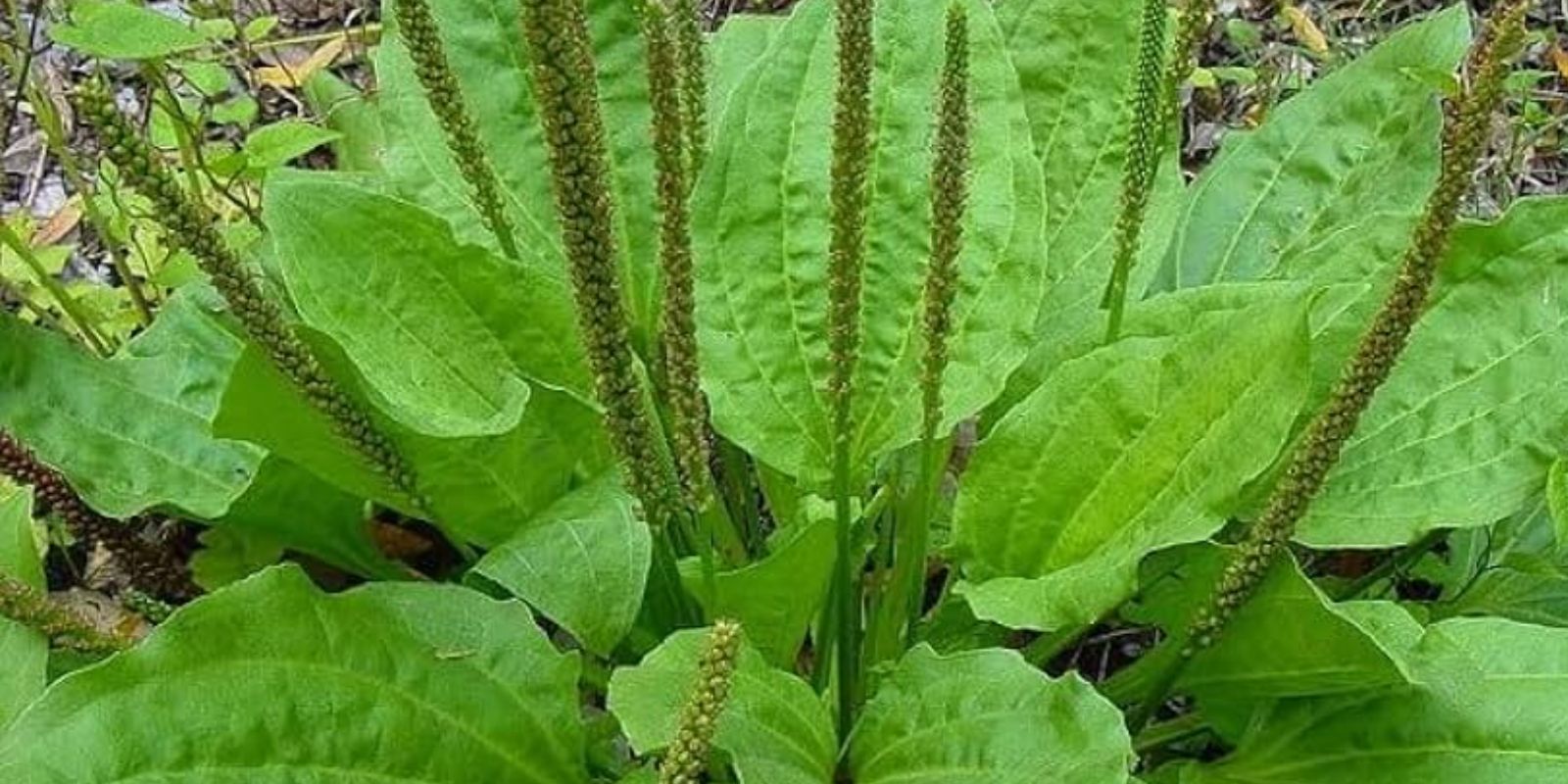Plantago major, or broadleaf plantain, is a modest plant that hides incredible potential beneath its unassuming appearance. Found along sidewalks, in backyards, and across meadows, this versatile plant is celebrated for its medicinal properties and ecological benefits. Despite being labeled a weed, Plantago major has been used for centuries to heal wounds, support health, and even improve gardening practices. This article explores the wonders of Plantago major, detailing how to identify, harvest, and use it for health and garden care.
Understanding Plantago Major: Nature’s Hidden Gem
Broadleaf plantain is native to Europe and Asia but has become naturalized worldwide. It thrives in various conditions, from compacted soils to fertile gardens, and requires little to no maintenance to flourish. Its leaves are characterized by broad, oval shapes with prominent parallel veins, while its flower spikes produce small, inconspicuous blooms.
Plantago major’s ability to adapt and grow in challenging conditions makes it a resilient plant worth appreciating. Whether you’re looking to enhance your garden or explore natural remedies, this plant has much to offer.
Benefits of Plantago Major
1. Medicinal Uses
Plantago major is renowned in traditional medicine for its soothing and healing properties:
- Wound Healing: The leaves contain allantoin, which promotes cell regeneration, making it effective for cuts, burns, and insect bites.
- Anti-Inflammatory: Plantain’s natural compounds reduce inflammation and alleviate conditions like skin irritation and swelling.
- Respiratory Support: When brewed into tea, plantain can soothe coughs and respiratory discomfort.
- Digestive Aid: It helps in soothing digestive issues like ulcers and bloating.
2. Ecological Contributions
Beyond its medicinal qualities, Plantago major supports the ecosystem:
- Improves Soil Health: Its deep roots aerate compacted soil, making it easier for other plants to thrive.
- Pollinator-Friendly: The flower spikes attract bees, butterflies, and other beneficial pollinators.
- Companion Plant: Plantain helps balance garden ecosystems by attracting helpful insects and repelling harmful ones.
How to Identify and Harvest Plantago Major
Identification
- Leaves: Look for low-lying plants with broad, oval leaves and distinct parallel veins.
- Flowers: Observe tall, slender flower spikes emerging from the plant’s base.
- Habitat: It thrives in sunny or partially shaded areas and tolerates poor soil conditions.
Harvesting Tips
- Collect leaves during spring or early summer when they are tender and nutrient-rich.
- Use clean, sharp scissors to snip leaves, ensuring you don’t damage the plant.
- Wash leaves thoroughly to remove dirt or contaminants.
Using Plantago Major in Everyday Life
For Natural Remedies
- Topical Application: Crush fresh leaves into a poultice and apply to wounds, bites, or burns for quick relief.
- Herbal Tea: Dry the leaves and steep them in hot water to create a tea that supports digestion and respiratory health.
- Skin Soother: Infuse the leaves in oil to create a salve for dry or irritated skin.
For Gardening
- Compost Booster: Add plantain leaves to your compost pile to enrich it with nutrients.
- Natural Fertilizer: Make a liquid fertilizer by steeping plantain leaves in water for a few days. Use this solution to nourish your plants.
- Soil Aeration: Plant plantain in compacted soil areas to naturally aerate and improve soil structure.
Step-by-Step Guide: Incorporating Plantago Major in Your Garden and Home
For Medicinal Use
- Harvesting: Collect clean, fresh leaves during the growing season.
- Poultice Preparation: Crush or chew leaves to release juices and apply directly to wounds or insect bites.
- Tea Brewing: Dry the leaves and steep 1-2 teaspoons in hot water for 10 minutes.
For Gardening
- Compost Addition: Shred leaves before adding them to your compost for faster decomposition.
- Fertilizer Creation:
- Fill a container with plantain leaves.
- Add water and let it sit for 3-5 days.
- Strain the liquid and use it as a nutrient-rich fertilizer.
- Soil Conditioner: Allow plantain to grow in problem areas of your garden to loosen compacted soil.
Caring for Plantago Major
While this plant is incredibly low-maintenance, a little care can enhance its growth and productivity:
- Light: It thrives in partial shade but tolerates full sun.
- Water: Plantain doesn’t need frequent watering; occasional rainfall is sufficient.
- Soil: Though it tolerates poor soil, it grows best in nutrient-rich, well-draining soil.
Tips for Sustainable Use
- Harvest Responsibly: Take only a few leaves from each plant to ensure continued growth.
- Storage: Store dried leaves in an airtight container for long-term use.
- Test First: When using plantain for medicinal purposes, test a small area first to avoid potential allergic reactions.
Conclusion
Plantago major is more than just a weed—it’s a powerful ally in both health and gardening. Its medicinal properties, ecological benefits, and low-maintenance nature make it a plant worth incorporating into your life. From healing wounds to improving soil health, the possibilities are endless.
Why let this humble plant go unnoticed when it offers so much? Try using Plantago major in your home and garden today.
💬 Have you used broadleaf plantain in your garden or as a remedy? Share your experiences below and let’s inspire each other to embrace nature’s hidden treasures!
#HealingPlants #PlantagoMajor #GardeningTips #NaturalRemedies #BackyardHerbs #EcoFriendlyGardening #HerbalHealing

